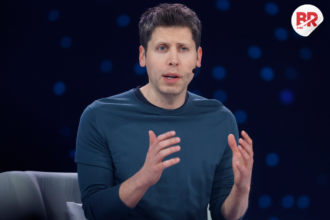
Imagine if robots could learn like humans do — by dreaming.
That’s not science fiction anymore. It’s NVIDIA’s latest AI innovation: DreamGen.
At first glance, it might sound like something out of a sci-fi movie. But here’s the reality — DreamGen is a synthetic video data engine that helps robots learn faster, smarter, and safer by simulating life-like scenarios in their “imagination.” Let’s break it down.

What Is DreamGen?
DreamGen is a new technology developed by NVIDIA that generates synthetic video data. In simple terms, it creates ultra-realistic video simulations that help robots learn new tasks, test actions, and prepare for real-world situations — all without touching the physical world.
Think of it like a robot dreamworld where machines can run thousands of “what-if” scenarios, try and fail without real consequences, and perfect complex tasks before actually doing them.
🚀 Thrilled to announce DreamGen — a simple yet powerful pipeline for **robot generalization**, driven by **neural trajectories** from **video generation models**!
🤖 With only teleoperation data from 1 task in 1 environment, we generalize to 22 new behaviors & 10 unseen envs. pic.twitter.com/7wWRcQgj37
— Jiannan Xiang (@szxiangjn) May 20, 2025
Why Robots Need to “Dream”
Training a robot in the real world is hard. It’s slow, expensive, and risky.
For example, if you’re training a delivery robot to navigate streets:
- Every failed test can lead to crashes or damage.
- Each test takes real time and physical setup.
- Scaling that training to millions of robots? Nearly impossible.
That’s where DreamGen comes in.
By letting robots simulate actions in a fully digital world, they can:
- Learn faster by repeating scenarios non-stop.
- Train at scale — thousands of robots can be “dreaming” at once.
- Avoid physical wear and tear during early learning stages.
How DreamGen Works
DreamGen uses advanced generative AI to create synthetic video footage. It’s like a movie studio for robots, producing realistic environments where they can practice skills such as:
- Walking or balancing
- Picking up fragile objects
- Navigating unfamiliar terrain
- Avoiding humans or obstacles
This simulation-based learning speeds up what would take months in real life to just days — or even hours.
Also Read The Future Is Here: Google I/O 2025 Unveils Smarter AI and Game-Changing AR Glasses
Real-World Impact: Why This Matters
The benefits of DreamGen reach far beyond tech labs.
For Industry:
Robots in warehouses or factories can train faster, improving supply chains and reducing costs.
For Healthcare:
Medical robots could simulate surgeries or emergency responses, becoming better assistants in operating rooms.
For Autonomous Vehicles:
Self-driving cars could “dream” thousands of city-driving hours overnight to improve safety.
Big Picture: A Smarter, Safer AI Future
By turning AI training into a digital simulation game, NVIDIA is solving a major bottleneck: slow learning in physical environments.
DreamGen empowers machines to become faster learners, more adaptive, and ultimately more helpful in real life — from homes to hospitals, highways to outer space.
NVIDIA’s DreamGen isn’t just about robots dreaming — it’s about unlocking the future of intelligent automation.
The next generation of robots might not just be built…
They’ll be dreamt.
Also Read Who Needs a Dev Team? GitHub’s AI Agents Write and Fix Code Now












